Home> Company News> A List Of The Most Common Water Pump Regulator Adjustments & Repairs
Water pump regulators are crucial components of a water pump system, responsible for regulating water flow and pressure. Over time, these regulators may become faulty due to wear and tear, leading to decreased performance and efficiency. Regular maintenance and timely repairs are essential to ensure optimal performance and longevity of the water pump system. In this article, we will explore the basics of water pump regulators, their common issues and repair techniques, and the importance of preventive maintenance to extend their lifespan.
Understanding the Water Pump Regulator
A water pump regulator is a critical component of a water pump system that regulates the flow and pressure of the water. It is responsible for maintaining a constant water pressure and flow rate in the system, regardless of the water demand.
The water pump regulator typically consists of a spring, diaphragm, and control valve. The spring and diaphragm work together to sense the water pressure and adjust the control valve's position accordingly. This, in turn, adjusts the water flow and pressure to the desired level.
A water pump regulator is designed to operate within a specific range of water flow rates and pressures. If the flow rate or pressure goes beyond this range, the regulator may fail, leading to a drop in water pressure or flow rate. Therefore, it is crucial to ensure that the regulator is properly installed and maintained to avoid damage and ensure optimal performance.

Signs of a Faulty Water Pump Regulator
A faulty water pump regulator can cause a range of issues, affecting the performance and lifespan of your water pump. Here are some common signs of a malfunctioning water pump regulator:
-
Fluctuating water pressure: If you notice inconsistent water pressure from your faucets or showerheads, it could be a sign of a faulty regulator. A malfunctioning regulator may cause water pressure to increase or decrease unexpectedly.
-
Water pump cycling: A malfunctioning regulator may cause the water pump to turn on and off frequently, which is known as water pump cycling. This can lead to excessive wear and tear on the pump and may cause it to fail prematurely.
-
Air in the water system: A faulty regulator may cause air to enter the water system, resulting in sputtering or spitting water from the faucets.
-
Water hammer: If you hear banging or clanging noises when turning on the faucet or flushing the toilet, it could be a sign of a faulty water pump regulator. Water hammer occurs when water pressure increases suddenly and causes pipes to vibrate or shake.
-
Reduced water flow: A faulty regulator may restrict the water flow, resulting in reduced water pressure and flow from your faucets or showerheads.
If you notice any of these signs, it's essential to address the issue promptly to prevent further damage to your water pump and plumbing system. A professional plumber can diagnose the problem and recommend the appropriate repair or replacement.
Water Pump Regulator Adjustment Techniques
Proper adjustment of the water pump regulator is essential to ensure optimal water flow and pressure. Incorrect adjustment can lead to issues such as low water pressure, high water pressure, or water pump damage. The following are some techniques for adjusting a water pump regulator:
-
Adjusting the Screw: Most water pump regulators have an adjustment screw that can be turned clockwise or counterclockwise to adjust the water pressure. Turning the screw clockwise increases the pressure, while turning it counterclockwise decreases the pressure. It is essential to make small adjustments and test the water pressure after each adjustment to ensure that it is within the desired range.
-
Adjusting the Springs: Some water pump regulators have springs that can be adjusted to control the water pressure. Tightening the springs increases the pressure, while loosening them decreases the pressure. It is important to refer to the manufacturer's instructions for the correct adjustment procedure.
-
Adjusting the Diaphragm: Some water pump regulators have a diaphragm that can be adjusted to control the water pressure. Tightening the diaphragm increases the pressure, while loosening it decreases the pressure. It is important to refer to the manufacturer's instructions for the correct adjustment procedure.
-
Adjusting the Pressure Switch: Some water pump regulators have a pressure switch that can be adjusted to control the water pressure. Adjusting the switch can be done by turning the screw on top of the switch clockwise or counterclockwise. Turning it clockwise increases the pressure, while turning it counterclockwise decreases the pressure.
It is important to make small adjustments and test the water pressure after each adjustment to ensure that it is within the desired range. It is also essential to refer to the manufacturer's instructions for the correct adjustment procedure, as different regulators may have different adjustment methods.
In addition to the adjustment techniques, it is important to ensure that the water pump regulator is not damaged or worn out, as this can affect its performance. Regular inspection and maintenance can help identify and address any issues before they cause significant damage to the regulator or the water pump.
Common Water Pump Regulator Repairs
When a water pump regulator is malfunctioning, it may require some repairs to restore its optimal performance. Below are some common water pump regulator repairs:
-
Replace the diaphragm: The diaphragm is an essential component of the water pump regulator that helps regulate the water flow and pressure. When the diaphragm is damaged or worn out, it may cause the regulator to malfunction. To fix this issue, the damaged diaphragm must be replaced with a new one.
-
Clean the valve seat: The valve seat is the component that controls the water flow and pressure in the regulator. Over time, the valve seat may become clogged with debris or mineral deposits, causing the regulator to malfunction. To fix this issue, the valve seat must be cleaned thoroughly to remove any debris or mineral buildup.
-
Repair the spring: The spring is the component responsible for regulating the water pressure in the regulator. If the spring is damaged or worn out, it may cause the regulator to malfunction. To fix this issue, the spring must be repaired or replaced.
-
Adjust the screw: The screw is the component that controls the water flow and pressure in the regulator. If the screw is not properly adjusted, it may cause the regulator to malfunction. To fix this issue, the screw must be adjusted to the correct position.
-
Replace the entire regulator: If the regulator is too damaged or worn out, it may require replacement. When replacing the regulator, it is important to choose the right replacement part to ensure optimal performance.
Proper diagnosis of the water pump regulator issue is crucial before undertaking any repairs. It is recommended to seek the services of a professional to diagnose and fix any water pump regulator issues. This will ensure that the repairs are done correctly and that the water pump regulator functions optimally.

Preventive Maintenance for Water Pump Regulators
Preventive maintenance is crucial for ensuring the optimal performance and longevity of water pump regulators. By following recommended maintenance practices, system owners and operators can avoid costly repairs and replacements, reduce downtime, and extend the lifespan of their water pump regulators.
One of the most important preventive maintenance practices for water pump regulators is regular inspection. A visual inspection of the regulator's components can help identify any signs of wear and tear, leaks, or damage. Any issues found during the inspection should be addressed immediately to prevent further damage to the regulator and the water pump.
Another important maintenance practice is regular cleaning. Over time, dirt, debris, and other contaminants can accumulate on the regulator's components, affecting its performance. Regular cleaning can help remove these contaminants, ensuring optimal water flow and pressure.
Proper lubrication is also crucial for the efficient operation of water pump regulators. Regularly lubricating the regulator's components can help reduce friction and wear, ensuring optimal performance and longevity.
Additionally, system owners and operators should follow the manufacturer's recommended maintenance schedule for their specific water pump regulator. This may include replacing worn out or damaged components, inspecting and adjusting the regulator's settings, and testing the regulator's performance.
By following these preventive maintenance practices, system owners and operators can ensure the optimal performance and longevity of their water pump regulators, reducing the risk of costly repairs and replacements, and minimizing downtime.
Troubleshooting Tips for Water Pump Regulators
Even with regular maintenance, issues with water pump regulators can still occur. In this section, we will discuss some common troubleshooting tips for identifying and fixing water pump regulator issues.
-
Check for leaks: Leaks are a common sign of a faulty water pump regulator. Check for any visible leaks in the regulator or water pump system. If a leak is detected, the system should be shut down immediately, and the leak should be repaired before continuing operation.
-
Inspect the water flow and pressure: If the water flow and pressure are not consistent, it could be a sign of a faulty water pump regulator. Use a pressure gauge to measure the water pressure at different points in the system, including before and after the regulator. Compare the readings to the manufacturer's recommended pressure specifications.
-
Check the water pump impeller: A worn or damaged water pump impeller can reduce water flow and pressure. Check the impeller for any signs of damage or wear and replace if necessary.
-
Inspect the regulator valve: If the regulator valve is stuck or not functioning correctly, it can cause water pressure and flow issues. Inspect the valve for any signs of damage, corrosion, or wear. Clean or replace the valve if necessary.
-
Check the system for air pockets: Air pockets in the water pump system can cause erratic water flow and pressure. Bleed the system of any air pockets by opening the system's bleeder valve.
-
Inspect the water pump bearings: Worn or damaged water pump bearings can cause noise, vibration, and reduced water flow. Inspect the bearings for any signs of wear or damage and replace them if necessary.
-
Check the water pump seals: Worn or damaged water pump seals can cause leaks and reduced water flow. Inspect the seals for any signs of damage or wear and replace them if necessary.
Regular inspection and maintenance can help prevent many water pump regulator issues. However, if an issue does occur, it is essential to identify and fix it promptly to prevent further damage to the water pump system. If in doubt, it is recommended to consult a professional to diagnose and repair any water pump regulator issues.
In summary, water pump regulators play a critical role in maintaining optimal water flow and pressure in various systems. Regular maintenance, accurate adjustment, and timely repairs are essential to ensure the regulator's efficient operation and prolong its lifespan. Common signs of a faulty regulator include low water pressure, fluctuations in pressure, and noise. Adjustment techniques such as setting the pump speed and adjusting the pressure switch can help optimize water flow and pressure. When a regulator component needs to be replaced, following the manufacturer's instructions is crucial to avoid further damage to the system. Preventive maintenance practices such as regular inspection, cleaning, and lubrication can help extend the regulator's lifespan and avoid costly repairs. Troubleshooting techniques such as checking for leaks and inspecting the water pump system can help identify and resolve issues promptly. By prioritizing water pump regulator maintenance and repair, system owners and operators can ensure reliable and efficient performance and avoid downtime and costly repairs.


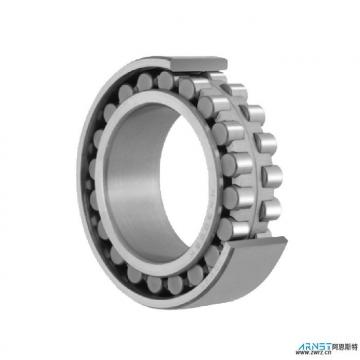 CRBH12025AUU Crossed Roller Bearing
CRBH12025AUU Crossed Roller Bearing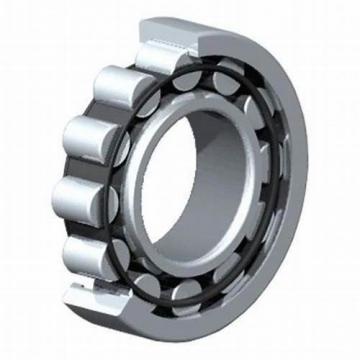 CRBH14025AUU Crossed Roller Bearing
CRBH14025AUU Crossed Roller Bearing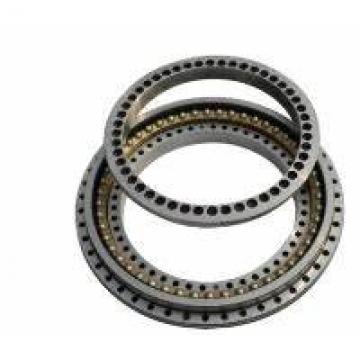 CRBH8016A Crossed roller bearing
CRBH8016A Crossed roller bearing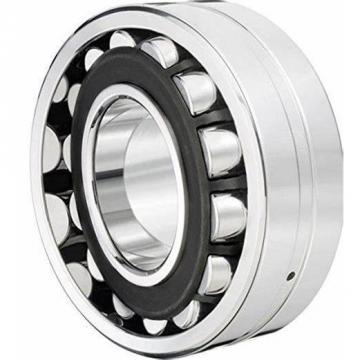 CRBH9016A Crossed roller bearing
CRBH9016A Crossed roller bearing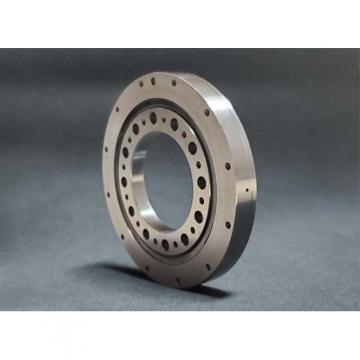 CRBH13025AUU Crossed Roller Bearing
CRBH13025AUU Crossed Roller Bearing